How to make Rosemary Olive Sourdough Bread with whole roasted garlic that requires no kneading and rises overnight. Video.
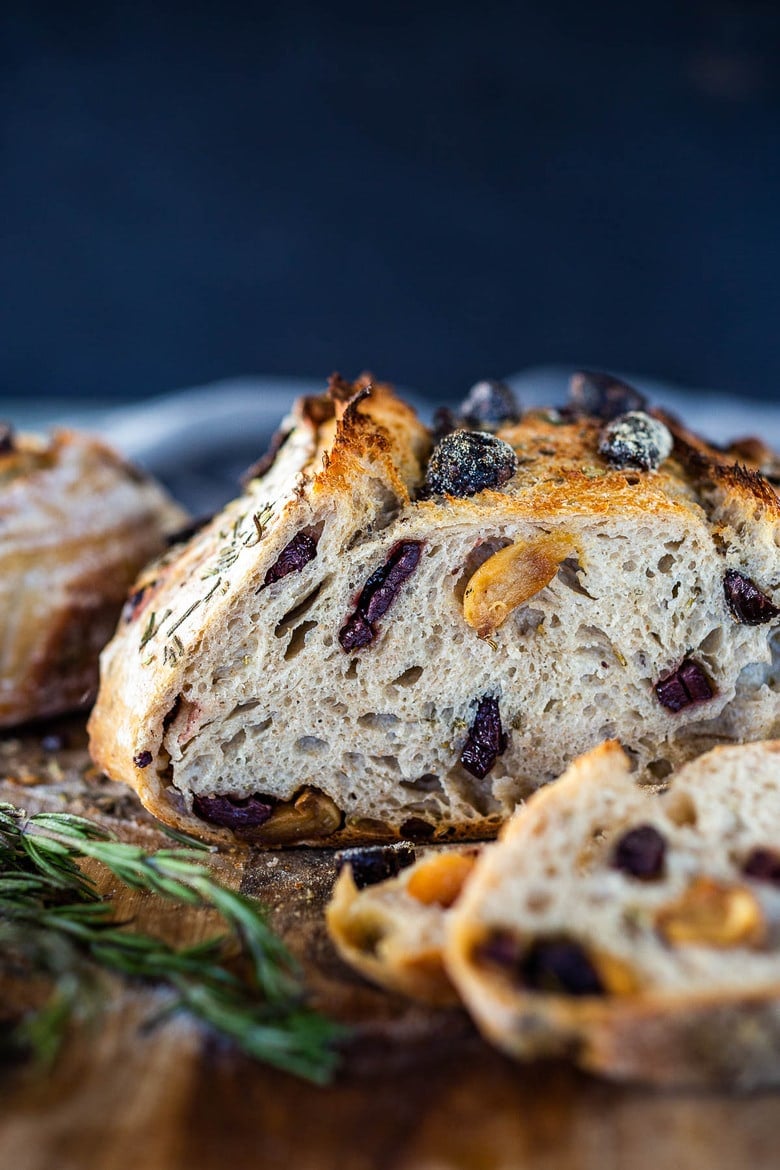
Many of you have been asking how to incorporate other ingredients into your sourdough bread recipe, so I just wanted to share one variation we’ve been making at home- Rosemary Olive Sourdough Bread with roasted garlic cloves.
This is my husband’s “dream loaf” and so it is one that is on repeat around here.
Before I start, I want to stress that this recipe is for those who have mastered our Easy Sourdough Bread Recipe. So start there first and then come back here. OK? 😉 It is very similar to that process, up until after the long overnight rise. Then we changed it up a bit.
What you’ll need:
- Sourdough Starter -make sure your starter is active and bubbly and doubles within 6 hours of feeding!
- Bread flour
- Salt
- Kalamata Olives
- Rosemary
- Roasted Garlic
- A Dutch Oven– Here are the 3 Best Dutch Ovens for Bread Baking
How to make Rosemary Olive Sourdough Bread (instructions)
Step 1. Mix the flour and salt in a bowl. (See the recipe card for detailed measurements.)
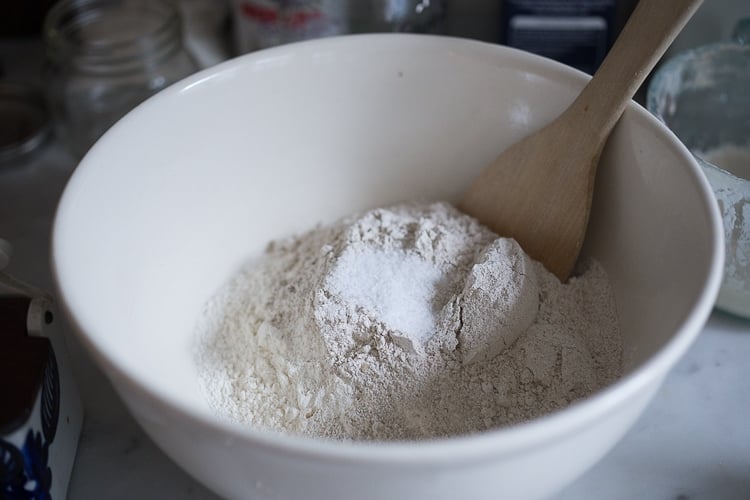
Step 2. Mix the water and starter in another container.
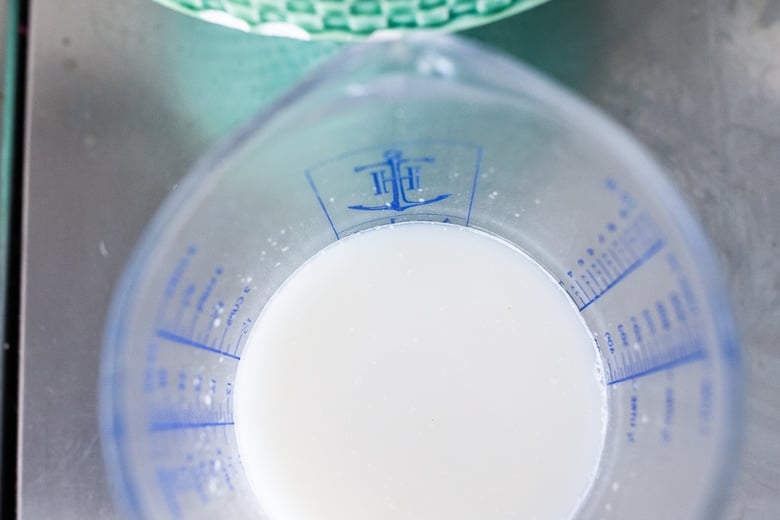
Step 3: Pour the water/starter mixture into the flour bowl and mix to incorporate, until all the flour is combined. If your mixture is very dry, it is OK to add a little bit of water so all th flour is incorporated. Cover the bowl with a damp kitchen towel.
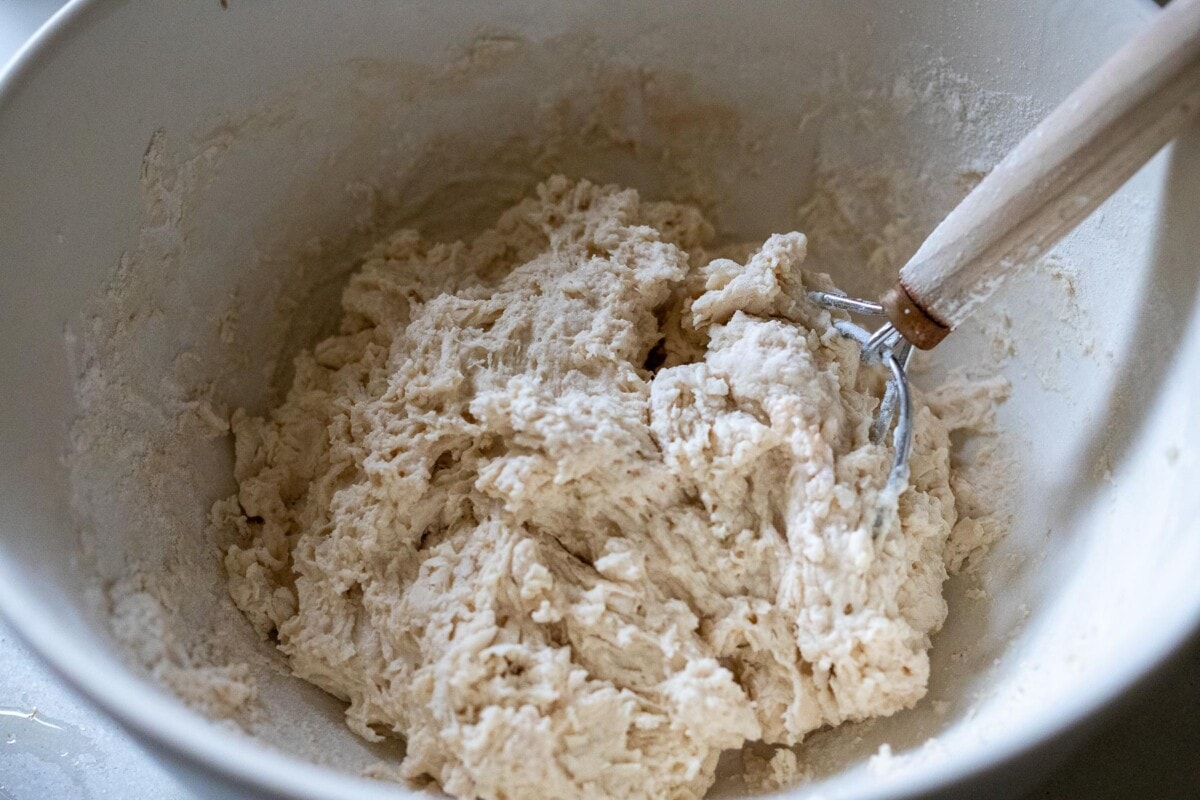
Step 4. Wait 15 minutes and then do two sets of “stretch and folds”, 15 minutes apart. You already know how to do this, but here is a refresher.
Sourdough bread “Stretch and Fold” Technique: | 45-sec Video
Step 5. Cover with a damp towel and let the dough rise overnight on the counter.
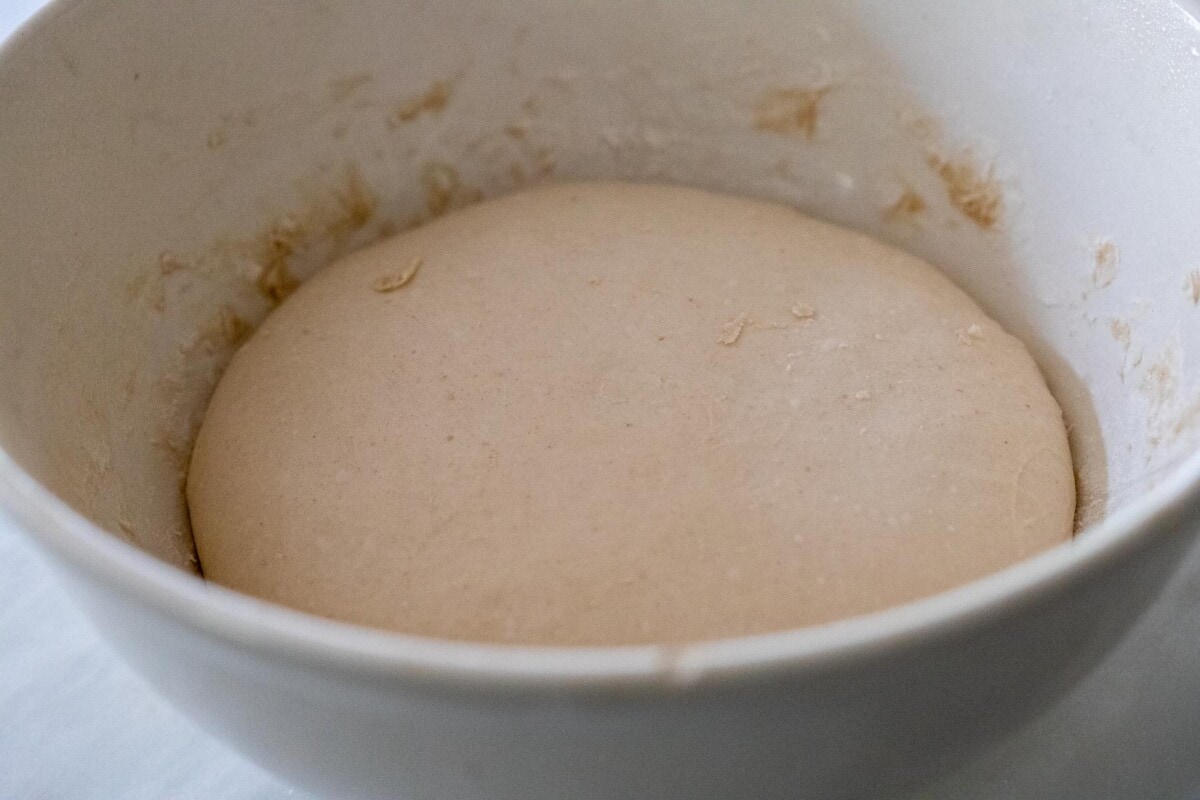
In the morning, the dough will have swollen, and jiggle like a full belly.
Step 6. When you think the dough has risen sufficiently, scrape the sides with a dough scraper (or wet fingers) and gently pour onto a well-floured surface. Gently pat into a rectangle, roungly 9 x 13.
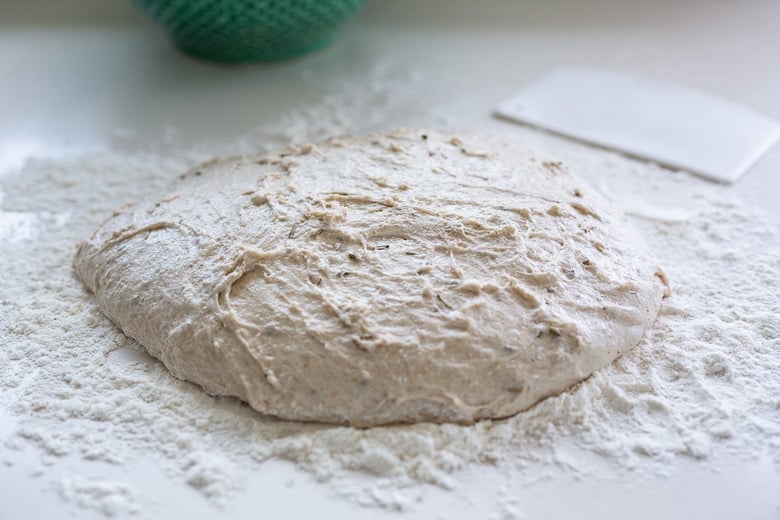
Step 7. Sprinkle in the ingredients you want to add. Here I’m using kalamata olives, roasted garlic and rosemary.
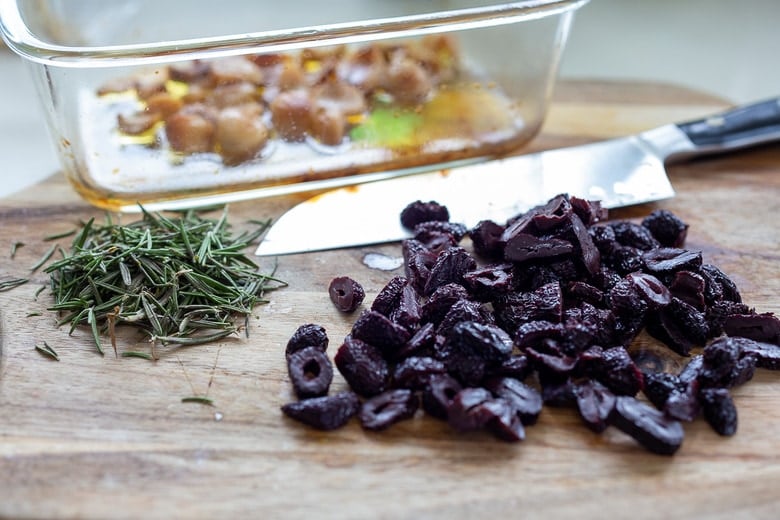
The roasted garlic adds so much flavor!
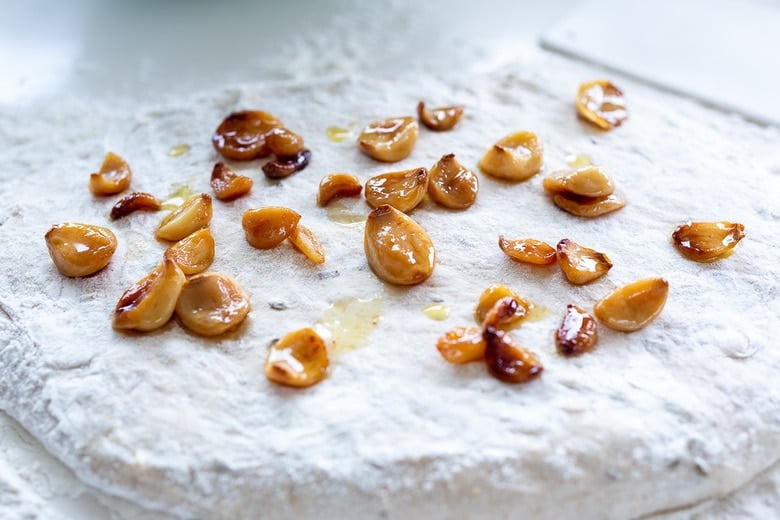
I really love this combo!
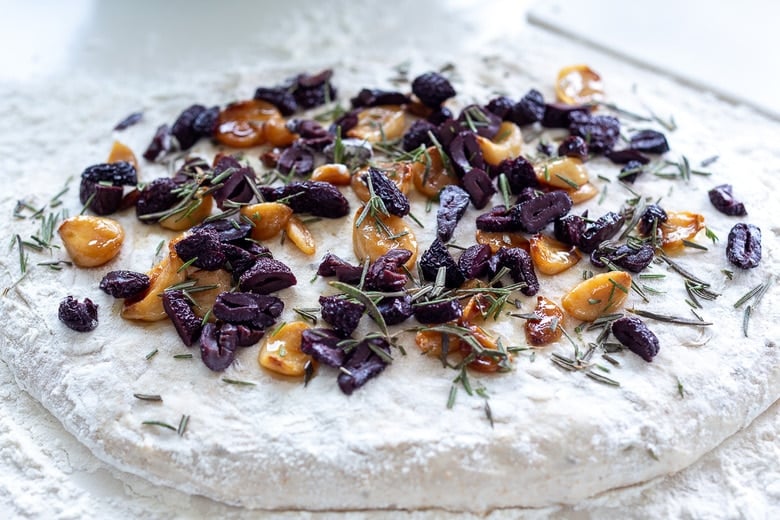
Step 8. Using a dough scraper lift one side up and over like a trifold letter. You can also simply roll up the loaf into a log if that feels easier.
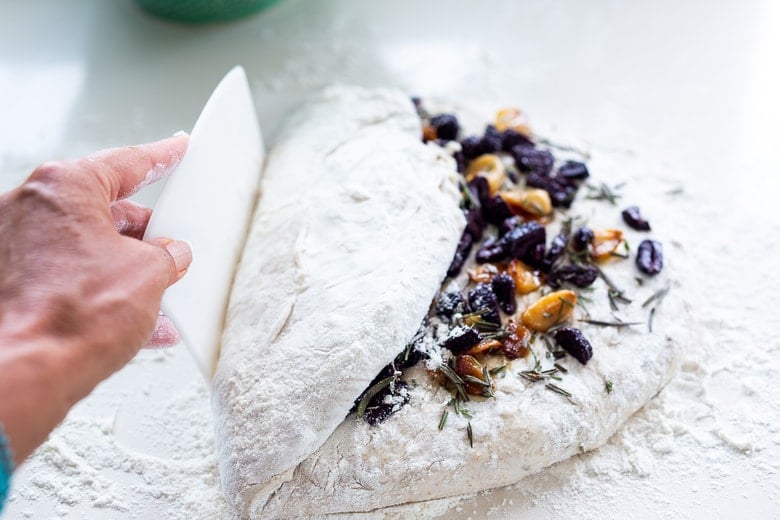
Tip: If doing the trifold, lift the other side, being mindful to overlap, so the dough is in between the filling, so the filling gets spread out in the final baked bread. Let this rest 15 minutes.
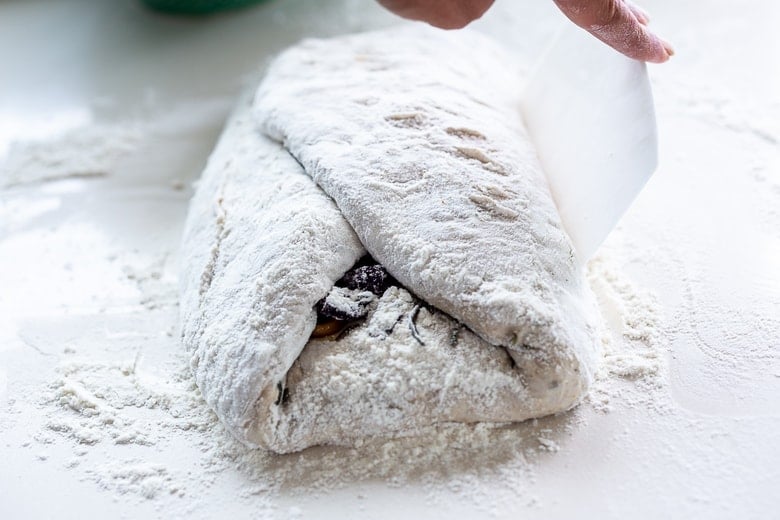
Step 9: Then repeat, turning the dough horizontally, gently flattening it out again, just a little, and tri-folding it once more, in the opposite direction. (Alternatively if you have rolled the dough into a log, turn it seam side down and fold under the ends to match the size of the banneton.)
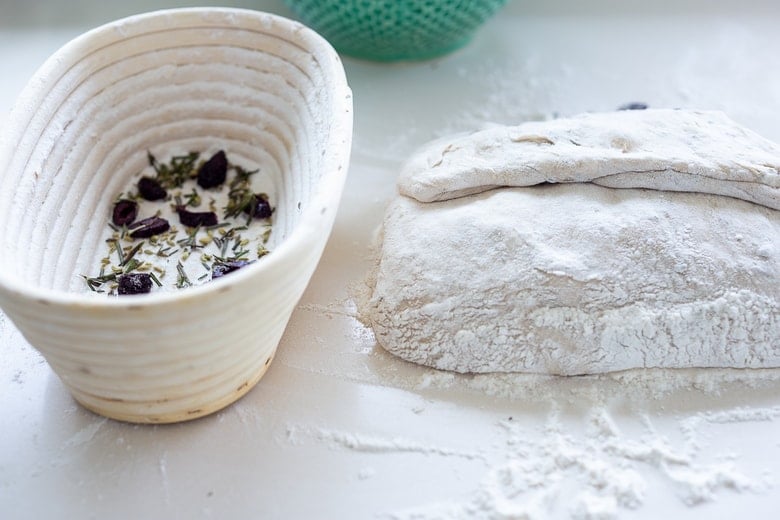
Step 10: Lift it into a well-floured banneton ( rice flour is best). You can sprinkle the banneton with more olives and herbs to decorate the top of the loaf. Be sure it is seam side up, pinching any seams closed. If you don’t have a banneton, use a parchment-lined bowl sprayed with a little olive oil.
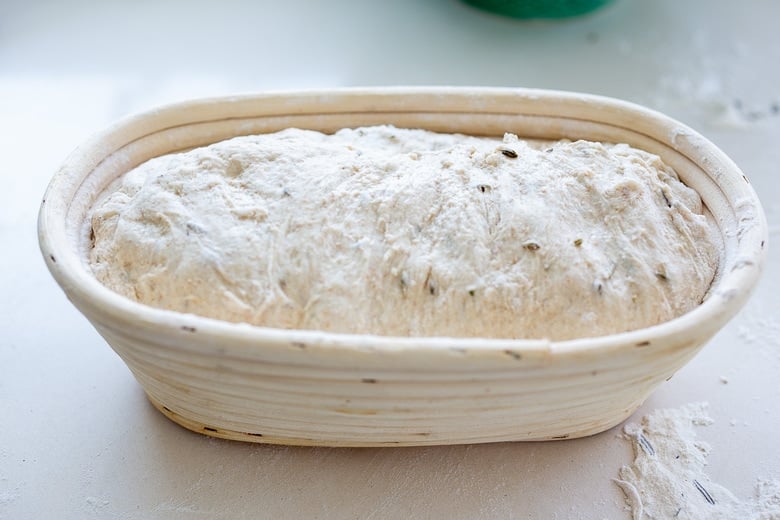
Step 11. Refrigerate for one hour while you preheat the oven with your lidded Dutch oven inside.
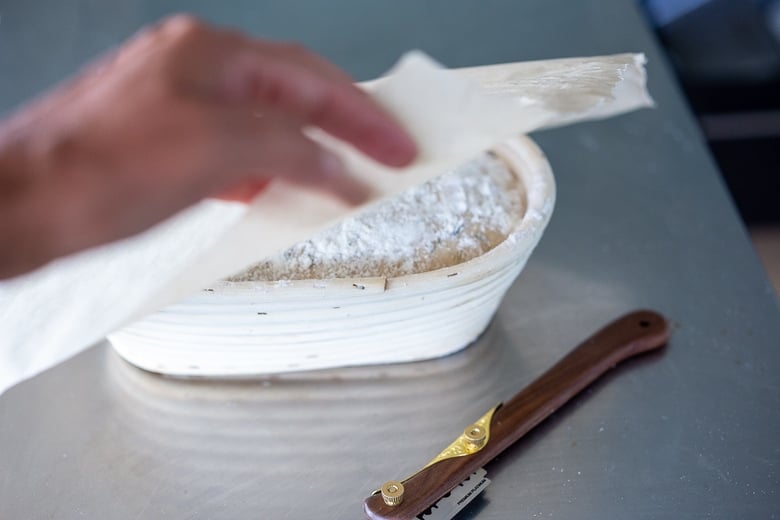
Step 12: When ready to bake, here is an easy way to get the dough into the dutch oven. Cover the dough with parchment and flip it onto the counter.
Alternatively, if you are an experienced baker, feel free to flip the sourdough directly into the dutch oven, you actually don’t “need” the parchment, we only use it here to make the dough easier to center.
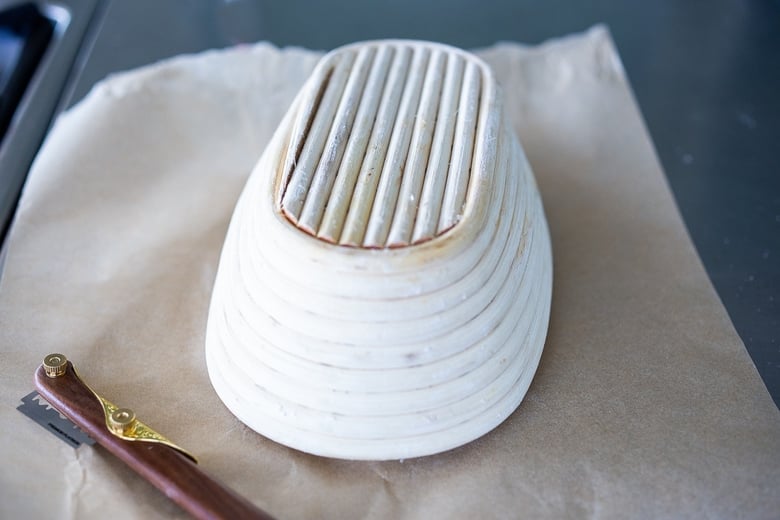
Step 13: Score using a razor or lame, then lift the dough and parchment into the dutch oven and bake!
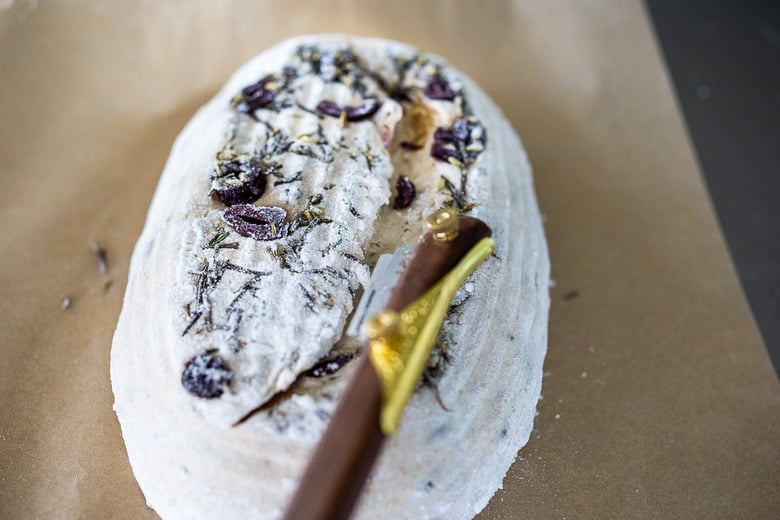
Here I’m using a lame to score the bread. It makes it very easy. If you’ve been baking a while, and plan on doing it more. Now is the time to treat yourself to a lame. It makes scoring fun! Also, consider getting a Banneton.
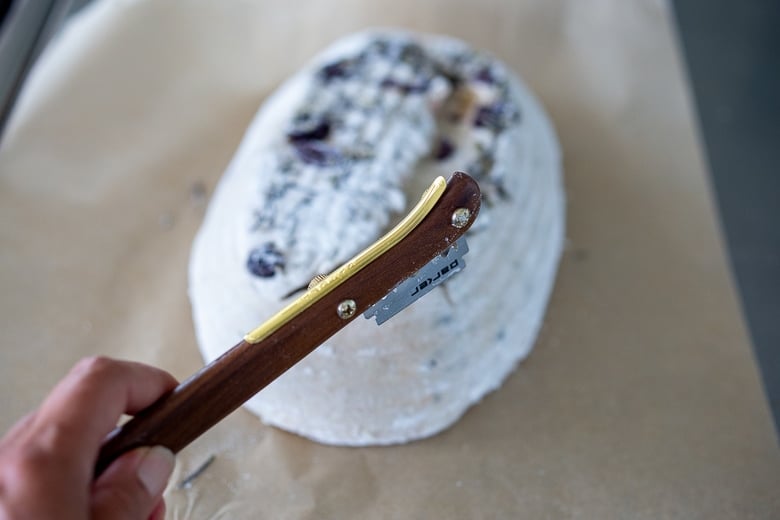
Step 14: Bake the bread in a 500F oven, covered, for 20 minutes, remove the lid and check the bread temp -internal bread temp should be around 200F. Continue baking uncovered 5-10 more minutes until deeply golden and internal temp reaches 204-208F.
If when you remove the lid, and the dough is has not yet reached 200F, replace the lid for a few more minutes, to let it get up to 200F before uncovering.
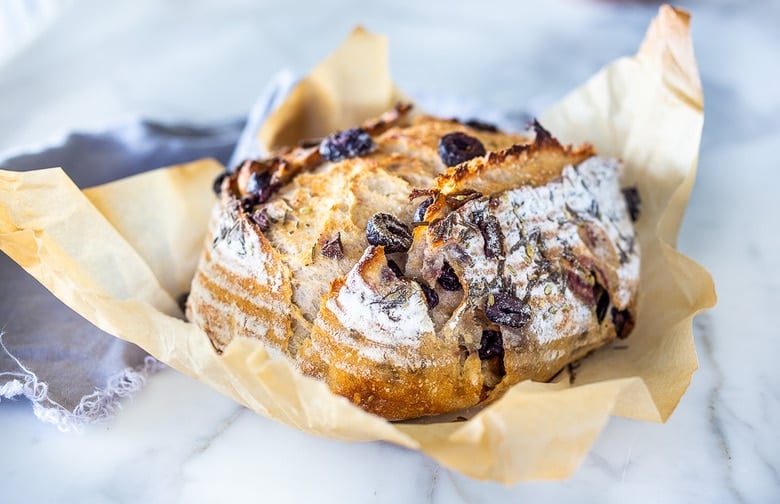
Serving suggestion
Let the bread rest 1 hour before cutting into it. Enjoy! I love this bread toasted, and served with good olive oil and balsamic for dipping.
Storage
Wrap in a kitchen towel or paper bag, or use a large zip lock. Store on the counter for 4-5 days, or in the fridge for 10 days. Or slice and freeze.
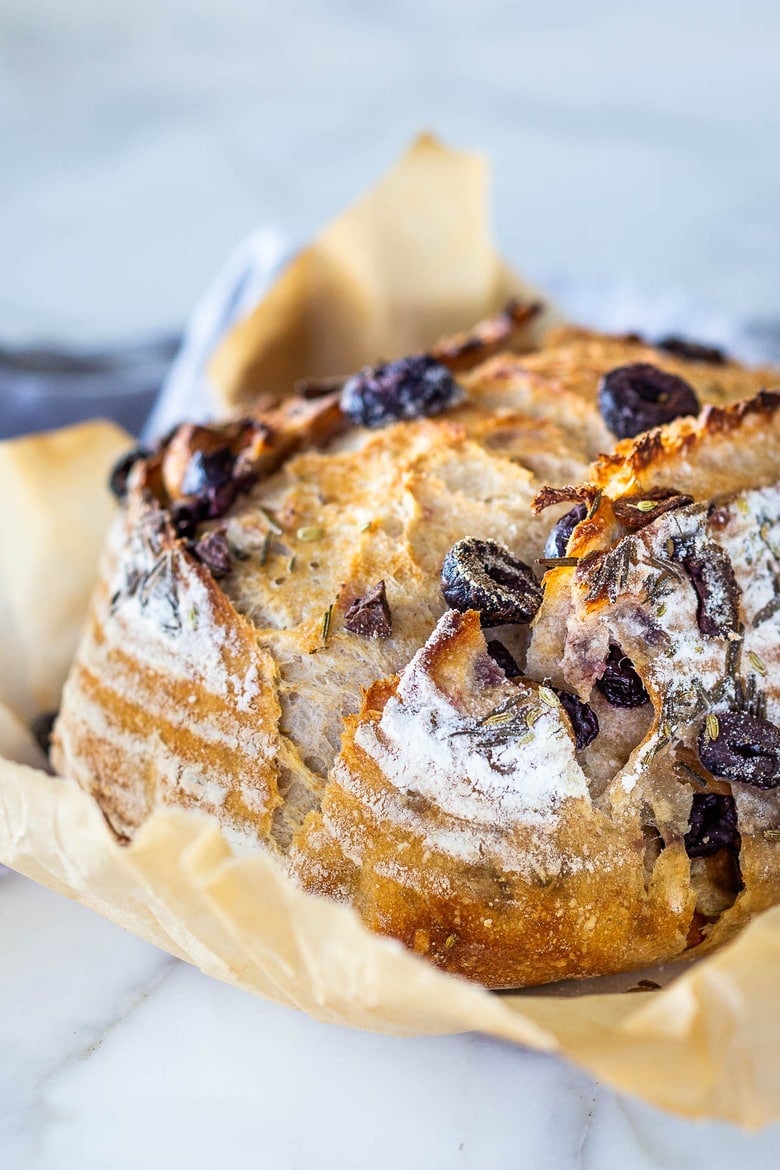
More Favorite Bread Recipes
- Vegan Banana Bread
- Overnight Sourdough Waffles
- Sourdough Pancakes
- Sourdough Scones
- Sourdough Biscuits
- Sourdough Buns
- Sourdough croutons
- The 3 Best Dutch Ovens for Bread Baking
On the homefront: The leaves begin their gradual turning and the sun sinks down a little lower in the horizon, creating the beautiful light I’ve come to love about the Northwest in the fall.
This week has been all about cozy slippers, making soup and baking bread. Truthfully, I’ve had some failures in the bread department. I won’t go into the nitty-gritty, but I am reminded that even if you’ve made bread hundreds of times, you still must pay attention.
Like life, there are endless possibilities for learning and the moment we think we’ve mastered it, life comes along and shows us otherwise. Ha!
Perhaps being human means that each day I have the opportunity to learn. And forgiving myself when I fail.
Have a beautiful fall weekend and happy baking.
xoxo
Be sure to show me your sourdough bread creations! I’m sure you’ll come up with lots of variations and I can t wait to see them! Show me on Instagram tagging #feastingathome.
Watch How to make Rosemary Sourdough bread!
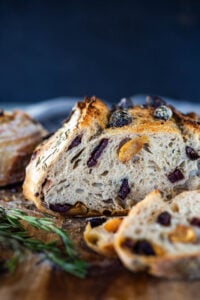
Rosemary Olive Sourdough Bread
- Prep Time: 25 mins
- Cook Time: 40 mins
- Total Time: 1 hour 5 minutes
- Yield: 1 loaf
- Category: bread, sourdough recipes,
- Method: baked
- Cuisine: northwest
- Diet: Vegan
Description
How to make Crusty Sourdough Bread, infused with rosemary, roasted garlic and olives that requires no kneading and rises overnight. Made with sourdough starter instead of yeast! Allow 10-14 hours rising time!
Ingredients
Basic Overnight Sourdough Bread
- 4 cups organic white bread flour (520 grams) see notes
- 2 teaspoons sea salt (12 grams)
- 1/3 cup sourdough starter (use after it has peaked) 90 grams
- 1 7/8 cup water (385 grams)
—–
- 3/4 cup chopped kalamata olives
- 2-3 tablespoons fresh rosemary, chopped
- 1/2 cup roasted whole garlic cloves (optional but good)
- rice flour for dusting (or sub regular flour)
Instructions
- Read through and perfect the No-Knead Sourdough Recipe (watch the video there) I recommend not attempting this until you have mastered that recipe. 🙂
- Mix the dough: At night, in a large bowl, mix flour and salt together. In a small bowl, mix starter and water together using a fork. Pour the starter-water into the flour mixture and stir with a fork until relatively combined. Using a wooden spoon, or dough mixer, scrape sides and mix dough for one minute, incorporating all the flour. The dough will feel thick and heavy and shaggy. Just do your best to incorporate all the flour. If for some reason the dough will not incorporate all the flour, add a tablespoon of water at a time to get it incorporated. Cover with a damp kitchen cloth, wait 15 minutes and do 2 sets of stretch and folds, 15 minutes apart. See video.
- RISE: Let rise overnight on the counter 10-14 hours. 65F-70F is ideal. In the morning, the dough should have swelled, but not quite doubled. Do the poke test.
- Prepare your banneton dusting the banneton with rice flour and perhaps some olives and rosemary in the bottom ( which will end up being the top.) See notes for using a regular bowl.
- SHAPE: Using a wet dough scraper, or wet fingers, loosen the dough around the edges and pour it onto a well-floured surface. Treat the dough gently, flattening lightly with your fingertips into a rough rectangle about 1 1/2 inches thick. It need not be perfect. Sprinkle the olives, rosemary and garlic over the surface. Using the dough scraper, lift up one side, stretching just a bit up and over to the middle, then fold up the other side, like a tri-fold envelope. You want the dough to be inbetween the filling so all the filling is not in one area. (See notes) Turn the dough horizontally. Let the dough rest for 10 minutes. Then repeat. Gently flatten with fingertips (it needn’t be as flat as the first time), then do another tri-fold. Pinch the seams closed and lift into the prepared banneton, seam side up.
- REST & PREHEAT Place dough in the fridge uncovered for 1 hour, while you preheat the oven to 500F (or 475F) with your lidded dutch oven inside.
- SCORE: Pull the dough from the fridge and have your lame (or sharp knife or razor blade) ready to score. Place a piece of parchment over the banneton and flip the dough, setting down on the counter over the parchment. Score 3/4 -1 inch deep at a 45-degree angle- basically wherever you want the dough to puff up. One slash is fine, or create a design.
- Pull the Dutch oven oven from the oven and close the oven door. Remove the lid, place the scored dough into the Dutch oven, lifting it by the corners of the parchment. (See notes) Quickly cover and place back in the oven.
- BAKE: Place in the middle of the oven for 20 mins with convection on, (or 25 minutes w/no convection ) or 28 minutes at 450F. Remove the lid, and the interior should reach 200F ( if not replace the lid until it does). Once 200F, uncover the bread, lower heat to 450F, and continue baking 10-15 minutes until deeply golden and internal temp reaches 204- 208F. No pale loaves please, let them get golden!
- COOL: Remove from the dutch oven, let it cool 1 hour on a rack or tilted up on its side, before slicing so you don’t let the steam out and don’t smash it- be patient. This is the hardest part. 😉. Take a picture! Feel proud. You did it!
Notes
NO Banneton: Use a parchment-lined bowl, sprayed with spray oil. Place dough seam side down. Sprinkle with flour and some sliced olives or rosemary if you like. Or even something like Everything Spice would be good here.
FLOUR: Feel free to sub 1/2 cup of the white flour with rye, whole wheat or other whole grain. Using more may create a heavy loaf.
Shaping: Instead of doing a tri-fold, simply roll into a log. Place seam side down on the counter and tuck the ends under. Let rest 5 minutes, before lifting into the banneton, seam side UP.
Nutrition
- Serving Size:
- Calories: 199
- Sugar: 0.3 g
- Sodium: 541.5 mg
- Fat: 2.4 g
- Saturated Fat: 0.4 g
- Carbohydrates: 40.5 g
- Fiber: 6.1 g
- Protein: 7.4 g
- Cholesterol: 0 mg
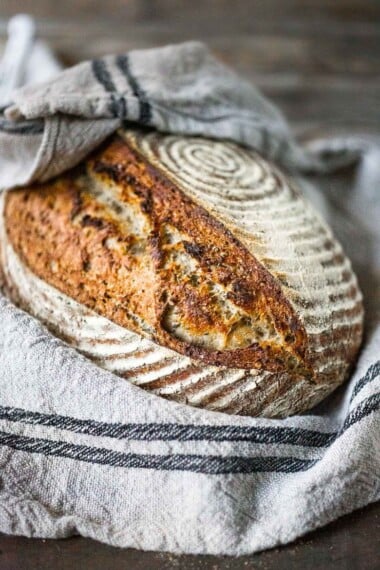
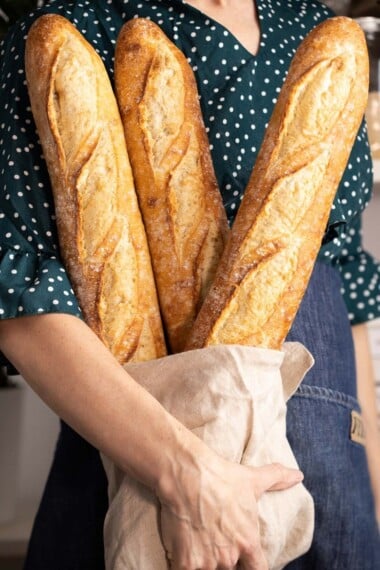
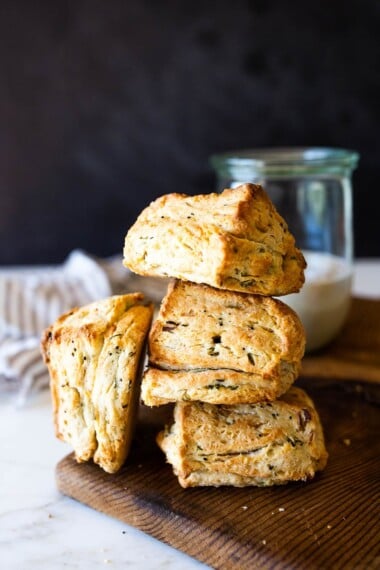
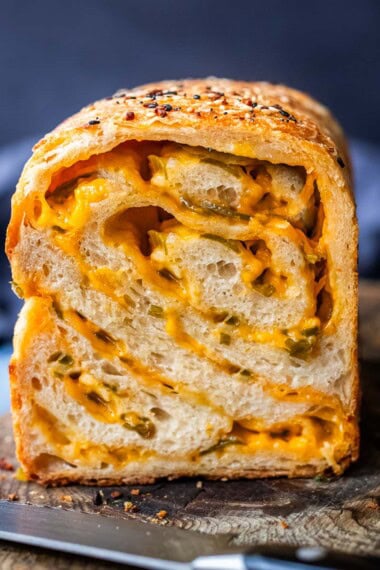
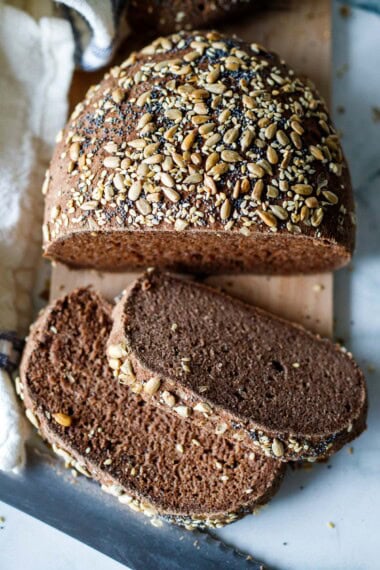
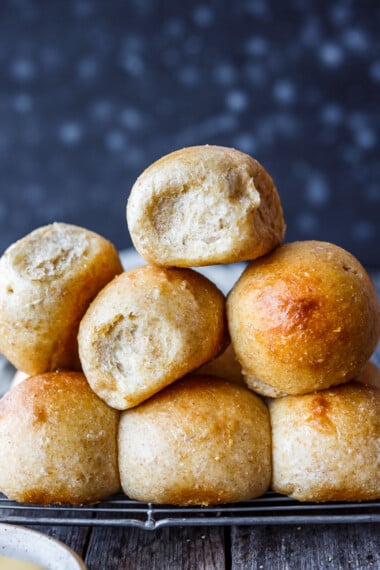
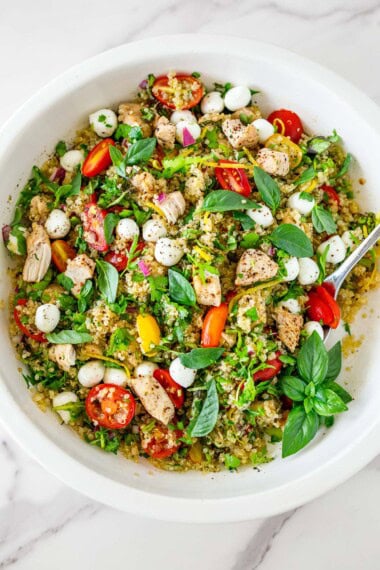
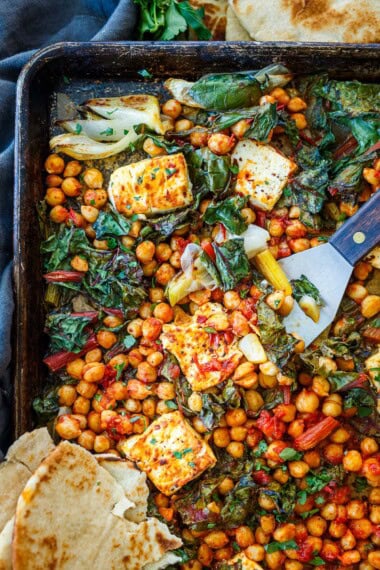


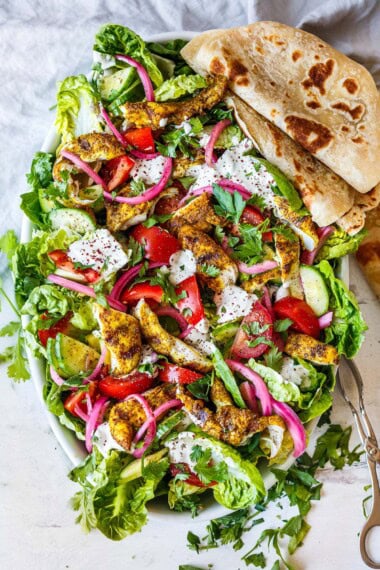

We just moved from Atlanta to Washington state. We’re now at sea level. I’ve made 2 loaves so far and they aren’t rising like they did on the east coast. Is there something I can do to get a better rise/larger loaf? TIA
Hey Jen, I bet it is your starter! Pull it form the fridge and feed only when hungry, everyday, until it doubles within 6 hours of feeding. Please refer to the sourdough starter post for troubleshooting. 🙂
Beautiful texture and seemingly fool-proof method. One of my favorite new recipes!
Awesome Ann! Glad you gave it a try.
I can’t believe how delicious this is! By far, the best bread I’ve ever made! Thank you for another amazing recipe!
Wonderful Lindsay! Nice job! 🙌🏼 😊
Beautiful!
Can I use reglare AP flour?
Feel free to give it a shot Kathy- I always have better results with bread flour but people do use AP flour and say it works. Up to you!
I love your recipes! I am trying to make a cranberry walnut using FRESH cranberries, not the dried and sweetened ones. I’d love to hear your thoughts on this.
Hi Diane, I think this sounds delicious. You could try adding them raw, but in my mind they might need a little sweetness. I would almost cook just a bit, them with a little maple syrup or honey?
I love this recipe! I have baked it once and the rest was history. Since my first bake, I have made 6 more, including turning this recipe of one big loaf into a recipe of 2 and 4 smaller loaves. I use the dough recipe to make my jalepeno cheddar loaf as well and I will probably use the dough recipe for future loaves and inclusions as well. Super fun to make and the aroma that fills the house while I roast the garlic and eventually bake the bread is PHENOMENAL! This bread has all of my favorite things and I can’t stop using this recipe!
Love it Josie! It is so fun and kind of addicting! Thanks so much for your helpful review and rating. 🙂